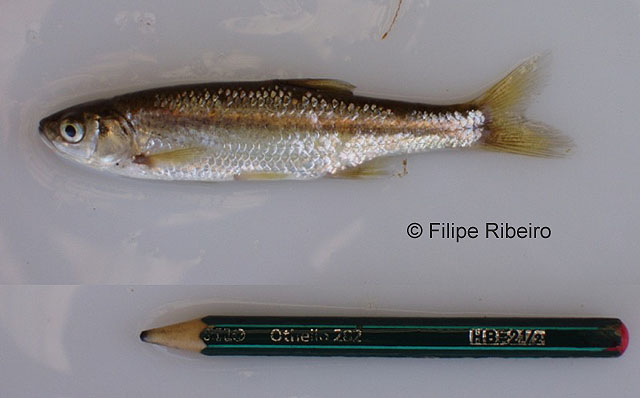| Leuciscidae (Minnows), subfamily: Leuciscinae |
| 25 cm TL (male/unsexed) |
|
benthopelagic; freshwater |
| Europe: Iberian Peninsula in Douro, Tagus, Sado, Guadiana, Odiel, Guadalquivir and Quarteira drainages. Introduced in Júca drainage. |
|
Dorsal soft rays (total): 7; Anal soft rays: 7-9. Diagnosed from other Cyprinidae in Iberian Peninsula by the following characters: barbels absent; dark midlateral stripe from snout to caudal base; body slender, depth 3.8-4.4 times in SL; 37-42 + 2-3 scales on lateral line; mouth opening upward; and anal fin with usually 8½ branched rays (Ref. 59043). |
| Lives in schools in lowland rivers and lakes. Feeds on invertebrates, chiefly small crustaceans and insect larvae. Breeds in April-May among aquatic plants and on stony bottoms in shallow water. Threatened due to pollution, habitat destruction and the introduction of other species (Ref. 26100). The species is unique as it represents a stable all-male lineage nested within an almost all-female hybrid lineage (Ref. 49905). |
|
Vulnerable (VU); Date assessed: 31 January 2006 (A3ce) Ref. (130435)
|
| harmless |
Source and more info: www.fishbase.org. For personal, classroom, and other internal use only. Not for publication.
